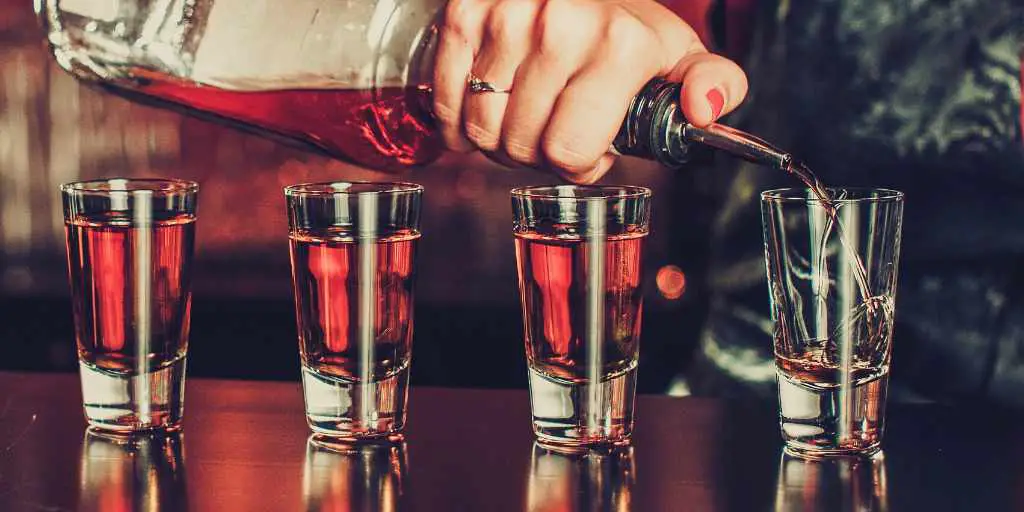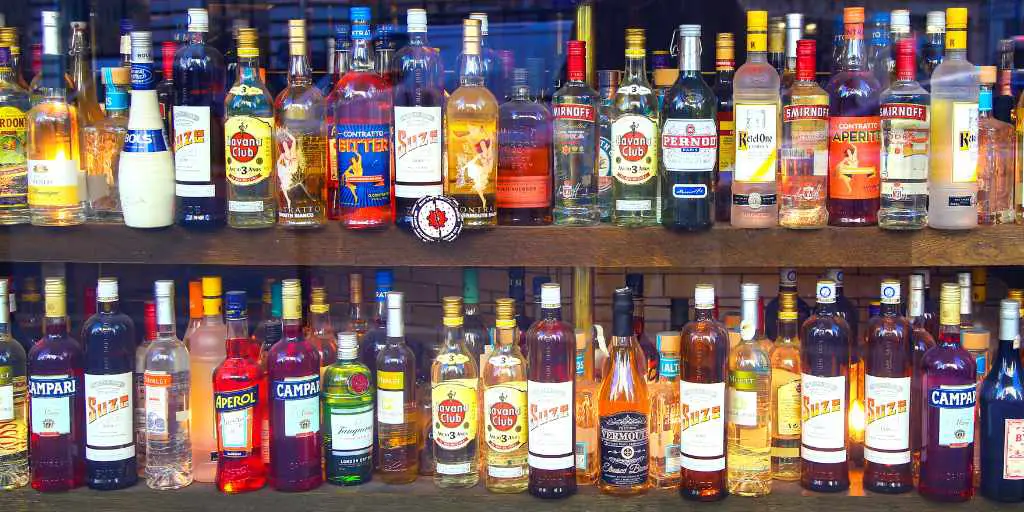If you’re pouring a shot at the house, there are probably about a hundred different ways to do it. You can even pour one upside down and backwards if you want to. It would make a good TikTok video. But to properly pour a shot using a spout, that actually takes a little more finesse.
There are five different types of spouts, so there is no one way to do it right. Always keep the pouring hole facing the bottle’s label, hold the bottle by the neck, get used to a particular rhythm, countdown, and plug the air vent hole when necessary.
Now, all of those things make sense, and you will do a bit of each every time you tip the bottle to pour. However, as we mentioned above, there is no one way, especially with various spouts on the market, each one addressing specific problems that bartenders run into.
What is a Pour Spout?
A pour spout takes the place of a bottle’s cap or cork with a small, angled tube made of hard plastic. The tube stretches up and out of the top of the bottle for about 2” and is oftentimes designed with a slight curve or angle in the middle.
The pour spout helps drink servers and bartenders control the flow of alcohol as it comes out of the bottle. It’s especially helpful when you’re in a rush and don’t want that expensive liquor all over the countertops.
These spouts typically sit on top of 750ml bottles and clamp onto the top by a series of fins that grab the interior of the top. It’s a nice little device, and it was invented in 1963 by John J. Daly.
While some pour spouts are designed to control the flow and all but eliminate splashes and spills, some have the additional feature of carefully measuring out the amount of liquor you want to pour into the shot glass.
It’s helpful when you pour four or five different flavours into a shaker and make four or five shots from the mix. As we mentioned above, there are five types of pour spouts to work with.
- Screened Spouts
- Flip-Top Spouts
- Long Spouts
- Measured Spouts
- Angled Spouts
Pouring a Shot Through a Spout
The first thing you will need is a spout that fits your liquor bottle like a glove. These things aren’t universal; oftentimes, they won’t fit on bottles larger than 750ml. So be careful what you pay for and ensure you have the right size to prevent leaks and spills.
You’ll also need to pick up a few jiggers of different sizes. If you are completely new to this, you won’t have a feel for measuring things out by just your eyes and counting. The jiggers will help you get used to pouring just the right amount.
To best control the pour, you should hold the liquor bottle by its neck, using the middle, ring, and pinky finger to wrap around the neck itself, pressing the other side of the bottle into your palm. Your index finger should point straight out, resting on the spout, almost pressing it down as you pour.
The rest is just a matter of tilt and pour. The thing is, you will have to get used to tilting and pouring. You don’t just slowly angle the bottle until liquid trickles out of the spout. You tilt the bottle up and let it pour. When you hit your mark, straighten the bottle quickly.
The process is supposed to be rapid, but it’s understandable if you aren’t at the point where you can tilt and drop a bottle rapidly. However, this is how you should practice it. Tilt, pour, straighten—and do it all in one, smooth, rapid motion.
Learning When to Stop: The Count
Counting while pouring into a jigger will help you quickly learn how much you need to pour if you do it directly in a shot glass. There are different-size jiggers, so there are multiple counts you may end up trying.
As we mentioned above, it’s important that you tilt the bottle all the way without pausing or slowly tilting it until it starts to pour out from the end. The best way to start is to go with a one-ounce jigger. Then you can move up in size, but only when you can pour the smallest jigger by heart and without hesitation.
Once you have your counts established with the ¾ ounce, 1 ounce, 1 ½ ounce, and 2 ounces, you’re free to move on to regular pouring whenever you want.
Which Speed Pour Spout is Right for You?
Odds are, unless you are a bartender, you probably only have one pour spout, and the odds are even better you have no idea which one of the above-listed five it is. You should learn because it’s important to get an idea of how each one pours and how fast.
Long Spout
This is your standard spout, also known as a “speed spout.” It’s the one that you will see more than any other when you pay a visit to your local bar. It’s definitely a favourite of bartenders, mostly because of its simplicity. Once you learn the count on a long spout, everything is simple after that.
The pouring time difference between the long spout and the other four is different. However, the difference is so little in a bar environment that it’s negligible at best. Long spouts typically come in two varieties—2” and 3”, though you may find one that’s somewhere in between.
Screened Spout
Screened spouts really have no advantage over any of the other types of spouts. What it’s good for is outside use, like those after-dinner cocktails when everyone wants to sit around the fire and sip on something that will warm up their insides. The screen keeps bugs out and maybe some dust and debris. That’s it.
Flip-Top Spout
Like the screen spout, there is no noticeable difference between the flip-top and the long spout when it comes to pouring. It simply has a closable cap at the top when you are not using it to pour.
Angled Spout
Also known as a tapered spout, the angle helps to control the pour and beginners may find it a little easier to work with than traditional long spouts. While it doesn’t slow down the rate of the pour, it has a different feel and heft to it when the liquor is poured out the top.
Measured
Bartenders like this one when they’ve gotten in a little trouble over waste or the bar is trying to cut back on costs. This spout simply makes it so that you get the exact amount of liquor for the shot and no more. Internal ball bearings help the pourer measure out perfect one and ½ ounce or 2-ounce shots.
Bottom line
Pouring a shot with a spout is an acquired skill; you have to work at it if you ever want to get it right. Jiggers help with this and it also helps to develop a little count when you pour. Once you have your count down in several jigger sizes, you are good to go and ready to start pouring shots.



